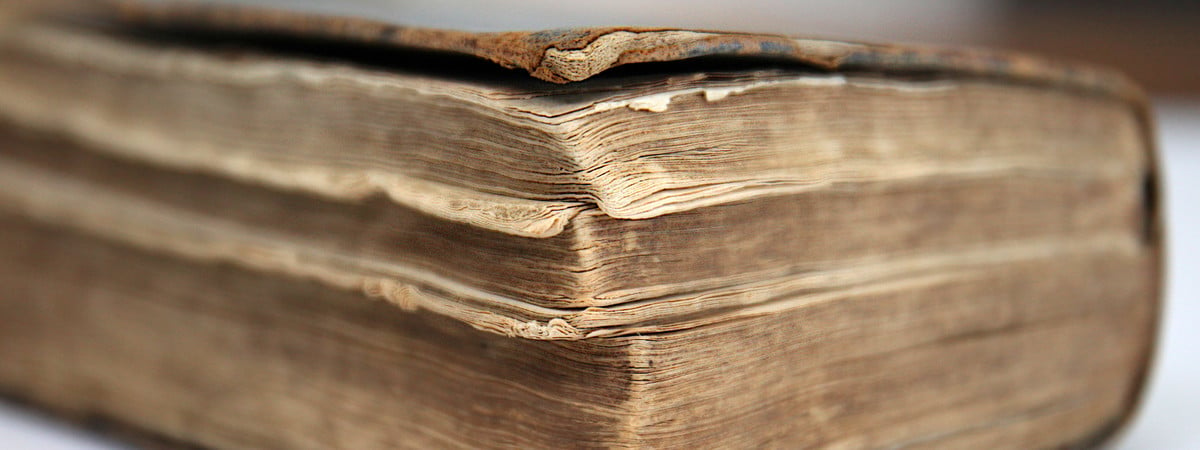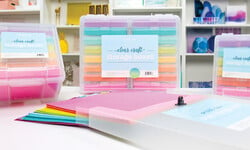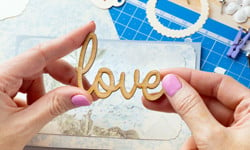For many scrapbookers, saving memorabilia is an important part of their memory keeping. However, as paper items age, they can deteriorate from natural processes and damaging environmental conditions – especially if they are not stored properly. Paper restoration of some items may become necessary so that they can be preserved in optimal condition for future generations to appreciate.
What is Paper Restoration?
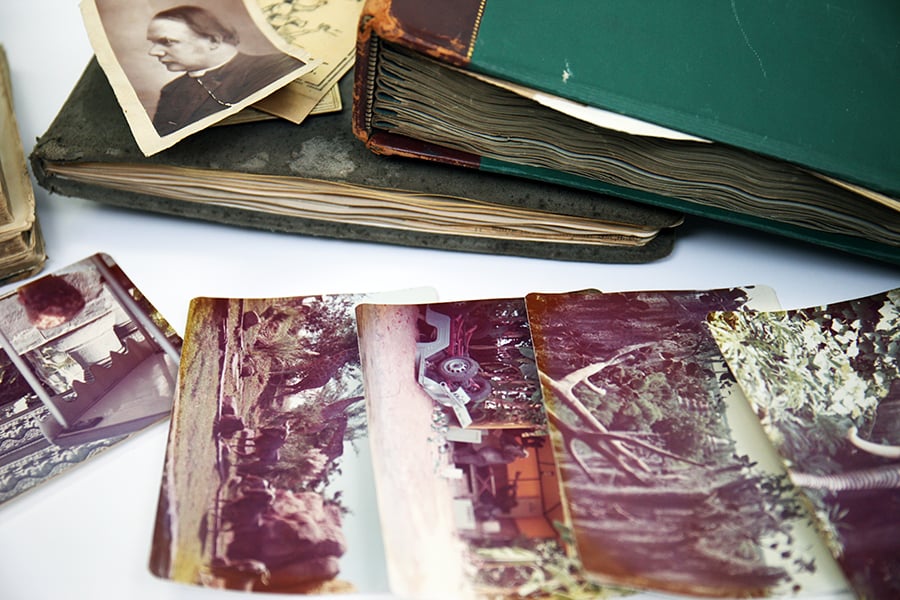
After a photograph, important document, or other piece of paper has succumbed to damage, there are a variety of options for what can be done to try to reverse some, if not all of the issues. Some damage to paper is irreversible, unfortunately, but other damage may be repaired or halted using paper restoration techniques.
A conservator is the person who, among other things, has the skills and knowledge to take steps to restore a degraded or marred object. Their objective is to return an object to its original look, and to preserve it from future damage. Most of us are familiar with the work of conservators who practice in archives and museums to protect priceless paintings and documents. The same techniques that those conservators use to protect historic treasures can be used to protect our own families’ and communities' treasures and history.
What Items May Need Restoration?
A surprising number of paper items that many of us have in our homes need to be conserved, or protected from forces that will cause them to eventually degrade. Some of these items we protect instinctively – such as by not putting our boxes of photos in the hot and humid attic. But others we neglect every day without thinking twice about them (like putting those family birth and marriage records folded in acidic envelopes in a drawer somewhere). Let’s look at some of the important paper items that may be hiding around your home in need of restoration or conservation.
Scrapbooks
Not only are scrapbooks works of art, but they are also historical records, and most scrapbookers intend their albums to outlive them and carry their memories decades into the future. A well-loved scrapbook can start to show signs of wear though, or deteriorate from the aging of glue and paper elements, subsequently requiring restoration. This is especially true of scrapbooks belonging to previous generations of scrapbookers, when there was virtually no awareness of paper acidity or safe adhesive methods.
Photographs
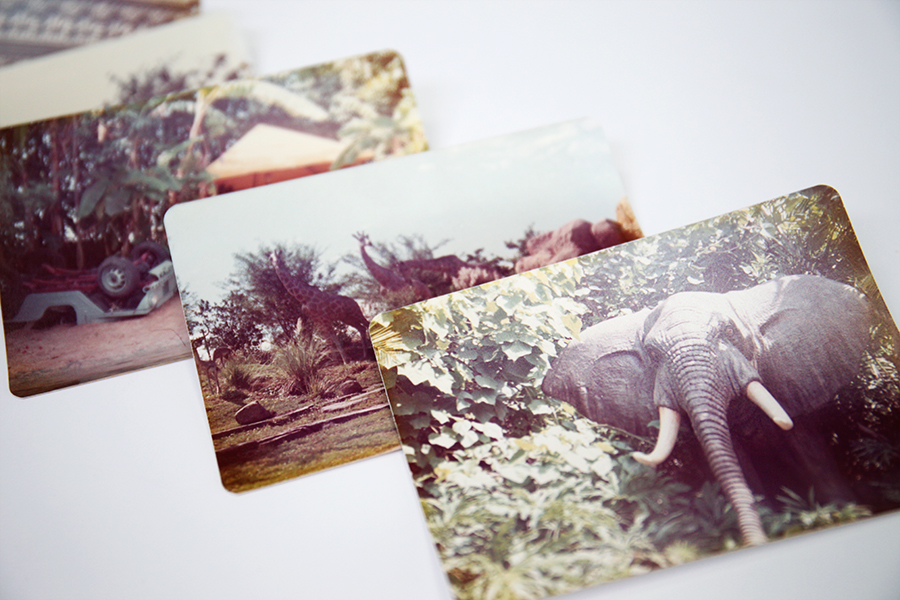
Photographs are inherently unstable from an archival standpoint, even under the best storage conditions, due to the chemical processes that create them. Antique photos are especially susceptible to deterioration as the early photographic processes were still being perfected and many have been stored in less than optimal conditions over the decades of their lives. Modern photos aren’t exempt from archival concerns: Digital photographs, while convenient to print on home printers, are very susceptible to fading in direct light.
Paper Documents
Even if we aren’t family historians, many of us have large collections of documents collected and saved: birth and marriage certificates, diplomas, passports, military and religious documents, and certificates. Frequent handling, poor storage conditions, and acidic paper can all contribute to the deterioration of these documents even while they are still being used.
Newspapers
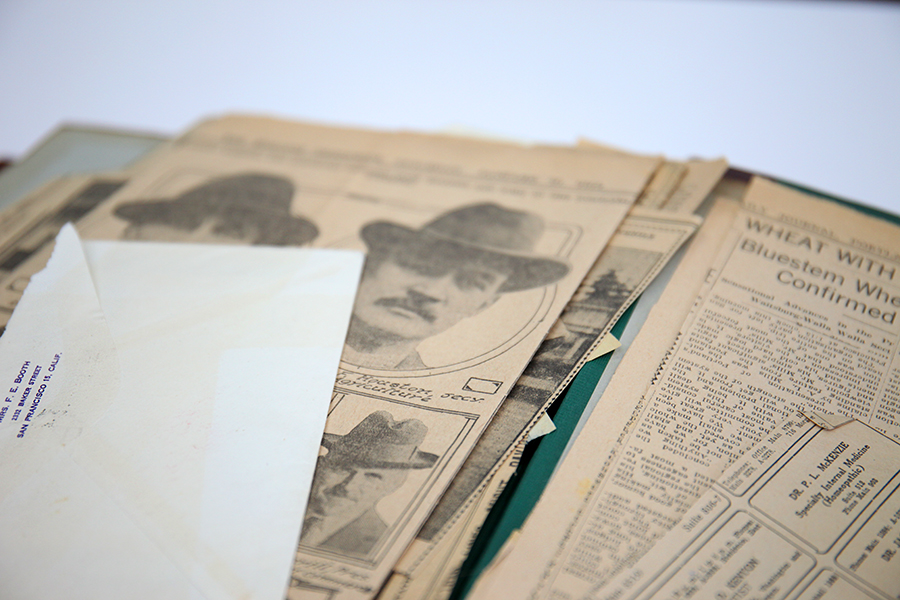
For as long as there have been newspapers, there have been proud moms clipping family references from them. Newspapers are designed to be cheap and disposable, with inexpensive, low quality (and thus acidic) paper and non-archival printing methods. Compound that with things like being tacked up to refrigerators and bulletin boards and years of poor storage in non-archival albums, and the story about grandma’s wedding is likely to be more than a little worse for wear.
Books
Books, whether it is a historic family Bible or an autographed copy of a book by a favorite author, are among many peoples’ most treasured possessions. The more we love a book, the more “unloved” looking it can get: the spine destroyed from being bent open too many times, the paper dust jacket ripped and faded, and the pages damaged and stained. Historic books like family Bibles face additional challenges as they age, as they often contain items like photos as well.
Why Restore Your Photos, Memorabilia, or Other Paper Items?
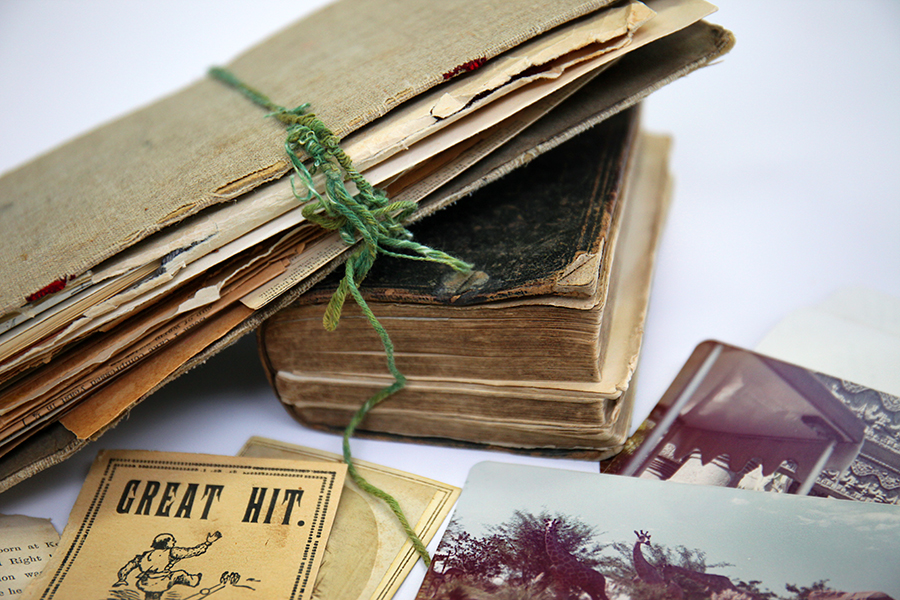
There are many reasons to restore photos, memorabilia, books, and other paper documents. One might be to make an item more appealing in order to display it, or because the item is irreplaceable. Another might be because the item holds historical importance or even sentimental value. For certain items, restoration can increase the item’s value as well. Restoration can also be done simply to preserve an item, to save it from further deterioration or destruction.
How Can Paper be Destroyed?
Paper, while an affordable and convenient medium to use for many purposes, is not a very permanent medium for preserving items. A variety of forces – environmental conditions, insects, improper handling, natural disasters, and even the content of the paper itself – can damage paper items or destroy them entirely.
There are specific threats that you might find yourself up against in trying to preserve and restore a paper item. Below, you'll find a detailed list of what all of these threats might be.
Biological infestations
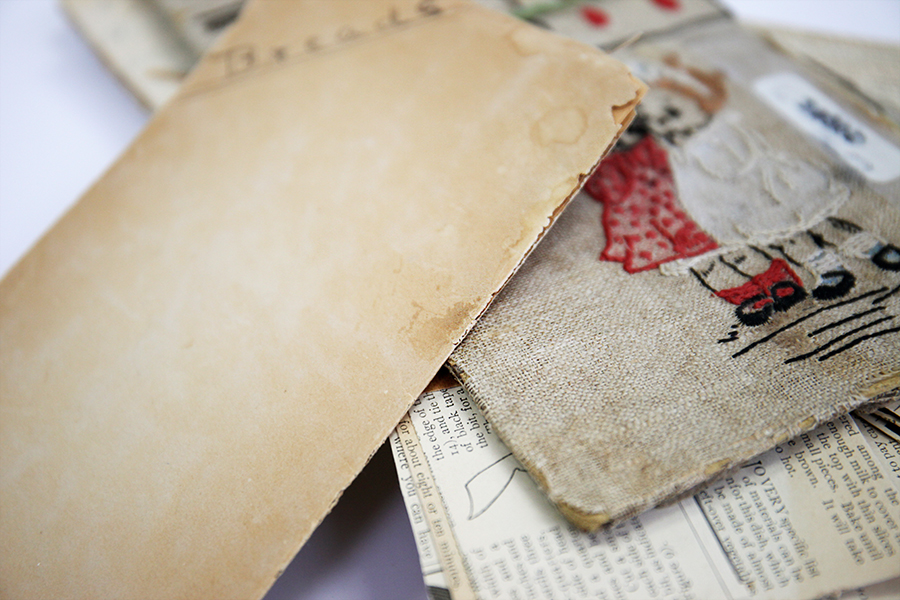
Mousechews. These bites taken out of paper by rodents appear as missing areas with teeth like patterns along the edges.
Insect Grazings. Winding canals or channels, created by insects such as cockroaches, worms, termites, and silverfish, can result in surface paper loss and structural damage, weakening the paper.
Wormholes. These canals that are created by bookworm activity completely eliminate a paper’s surface.
Flyspeck. These tiny spots left from flies materialize as small shiny or dark spots on paper, and are caused by the acidic feces of the fly.
Insect Incrustations. This is the accumulation of mashed insect parts onto the surface of paper, often mushed spider legs or smashed flies.
Foxings. Caused by a type of mold, foxing appears on paper as reddish brownish stains that are usually visible in snowflake or bullseye like configurations.
Molds. Mold can appear on paper in a surprising array of colors, including green, black, and red – or it can even be invisible to the naked eye completely, only visible under the help of an ultraviolet light. A mold colony on paper may be a living, active growth, but it can also be dormant and appear as spores. Paper may become spongy in the event of mold infestation.
Structural Damage
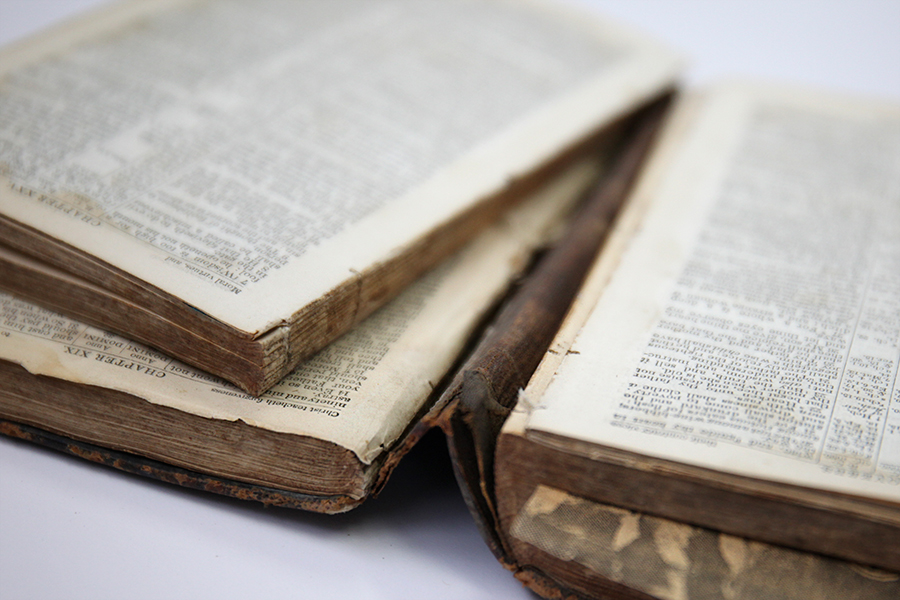
Losses. Characterized by the absence of paper where it used to be, loss can appear on the edges or the middle of the page.
Holes. A hole is a perforation, such as from stapling or tackling, that does not cause paper loss.
Fragility. Caused by handling of the paper, this delicate state throughout the paper can easily lead to tearing.
Brittleness. Fragility caused by the paper’s acidic nature can lead to the paper falling apart when handled.
Tearing. These uneven, soft-edged splits in the paper may have edges that overlap each other.
Splitting. A linear, soft-edged break in the paper that occurs due to worn folds or creases - or due to paper shrinking when it is restricted.
Cuts. Cuts occur as even, hard-edged splits in the paper. The edges of the cut do not overlap each other.
Trims. Characterized by the cutting of the perimeter of the paper, trimming reduces the paper’s overall size.
Adhesive Damage
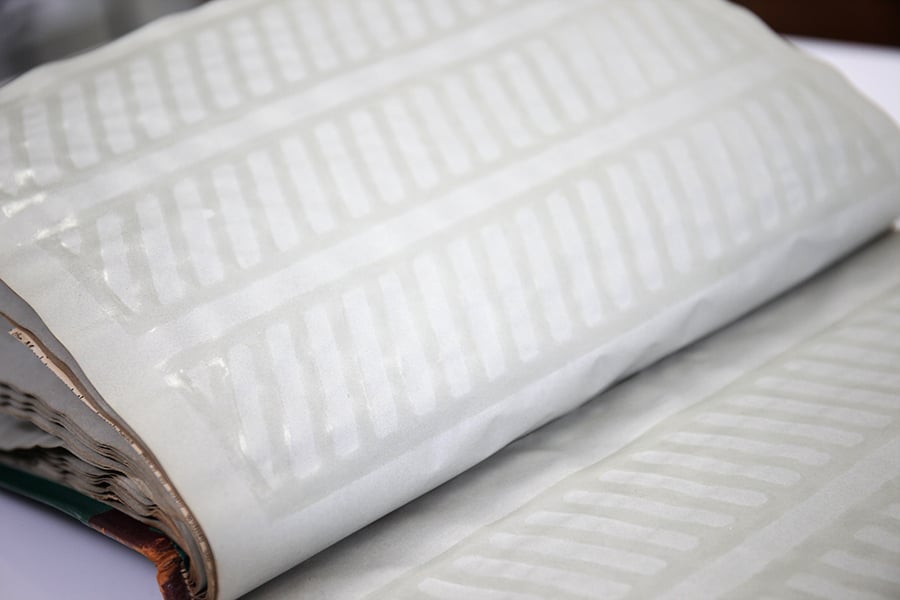
Adhesive Residues. Resins, waxes, glues, and pastes can cause build up on the surface of paper and saturate its fibers, leaving stains, sticky areas, or making the paper become brittle or cracked.
Pressure Sensitive Adhesive Tapes. Items like carpet tape, masking tape, and Scotch tape can only be taken off with solvents that will result in damage to the underlying media.
Heat Activated Adhesives. Tapes like drymount tissue can create blocking.
Water Activated Adhesive Tapes. With water, items like kraft and linen adhesive tape are reversible, but may leave behind staining or impressions.
In order to prevent damage caused by adhesive, make sure to always utilize acid-free adhesives on paper products.
Planar Damage
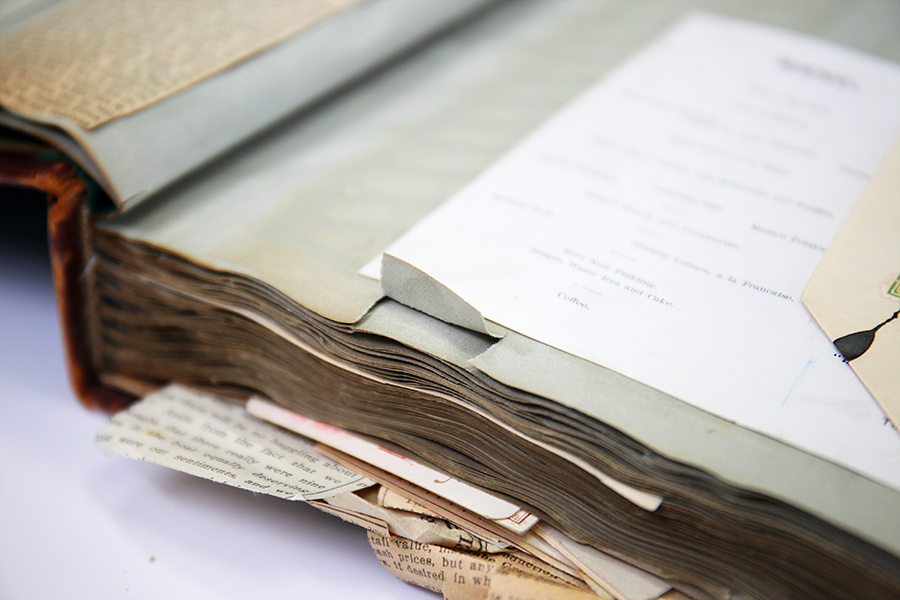
Bucklings. Unsystematic waves in the paper, bucklings are soft and can be both convex and concave distortions.
Dog Eared. This folding on the corner of a piece of paper is usually seen on pages in a book, and causes damage to the paper where it is creased.
Cocklings. Cockling occurs when a paper has vertical or horizontal repetitive waves in the paper.
Draw. This diagonal cockling will be seen from the center support to the corner, and is many times caused by a piece of paper being matted at two corners as a result of tension.
Creases. Like dog ears, creasing a piece of paper breaks the fibers of the paper, which becomes visible along a line in the exact place the paper was folded.
Folds. The part of the paper that is flexing might be completely creased, ultimately breaking the fibers of the paper.
Warping. With warping, the paper is damaged to a point where the whole piece of paper is curved in either a convex or concave direction.
Wrinkles. Angular distortions in the paper are known as wrinkles.
Bulges. When humidity gets into paper, from humid environments, floods, hurricanes, and more, it can create convex distortion in it called bulges.
Accordion Pleats. When paper has jammed during a mechanical process, it can jam into a sequence of zig-zagged folds.
Dents. Force on paper can cause these concaved impressions.
Dimplings. Dimpling is normally seen as distorted corners. There is usually a definite concave region with a raised area around it. More often that not, dimples are created due to adhesive holding the paper to a support.
Surface Damage
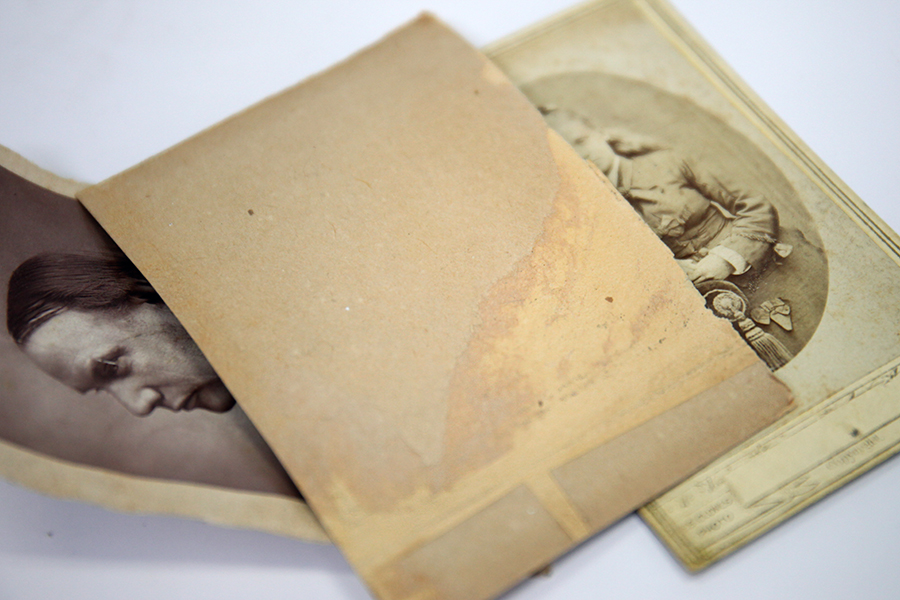
Delamination. Delamination occurs when there are two layers of the paper (such as a photo’s image and backing) that are separating.
Skin. Sometimes a thin, undeviating layer of media will be detached, often during tape removal or by the media getting stuck to some other surface (like a glass photo frame), lifting some of the paper up and off of the original media.
Abrasions. Damage from repeated friction or rubbing will show on media as some paper fibers being missing, referred to as abrasions.
Scratching. Scraping of the media can result in a linear area with missing fibers.
Scarring. If an area of the media was scratched and a mark was left – but no media was lost – a compressed scar can remain behind, instead of a scratch.
Shiny. Accidental polishing can cause lustrous regions.
Dullness. Water, sunlight, and age can all cause damage that makes the paper’s finish appear matte.
Discoloration. Deteriorating chemicals in photos, light exposure, and/or acid in paper can cause paper and images on it to change colors.
Surface Soiling. This build up can be the result of environmental conditions or oxidation.
How to Restore Paper Items
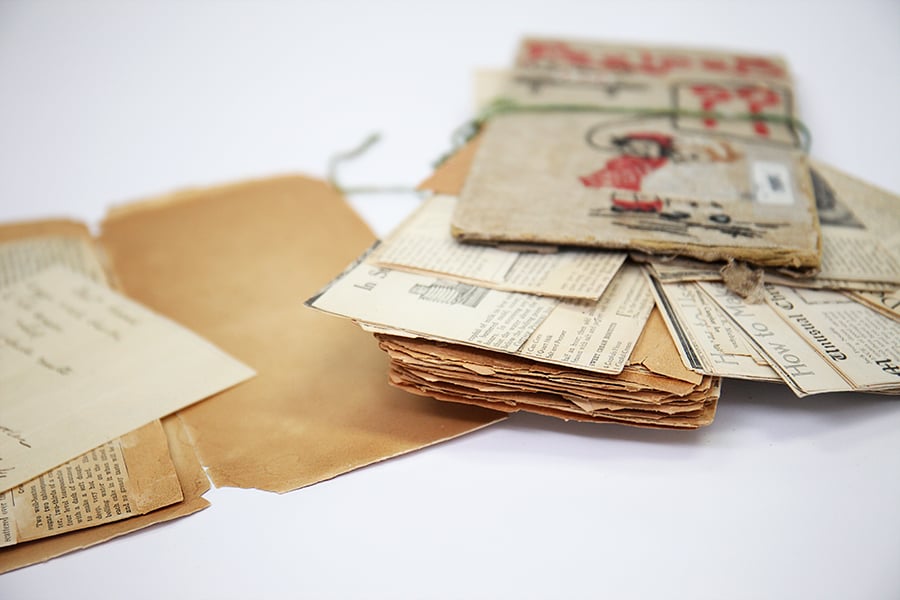
Looking at the list above, you may be thinking that it is a miracle any paper items survive for very long at all! There are many things that can be done to protect and preserve paper documents, historical records, and memorabilia – and to restore paper items that have not been cared for well.
Restoration techniques should be tested on an inconspicuous area before being used, and their safety and efficacy varies depending on the material being treated. With extremely fragile or precious items, it may be best to hire a professional conservator to work on your item.
Preventing Damage
The easiest way to restore paper items is to prevent damage to them in the first place. This means storing items away from water sources, in a cool low humidity environments, and away from light if possible.
Items that are in contact with paper during storage can cause damage, starting with the container. Paper requires an acid free environment, so it's important to pay attention to the acidity of containers used for storage. Special acid-free archival boxes, pouches, and folders are available for purchase that are sized to hold most commonly stored paper items.
Keep harmful adhesives away from your items, and don’t store them with metal accessories, such as paperclips and staples, that might corrode what is attached to them.
If you live in an environment that falls victim to flooding and hurricanes, consider storing your cherished heirlooms in areas of the house that are either easy to access in times of trouble, or that are unlikely to suffer as the result of such storms.
Removing Insect Infestations Through Freezing
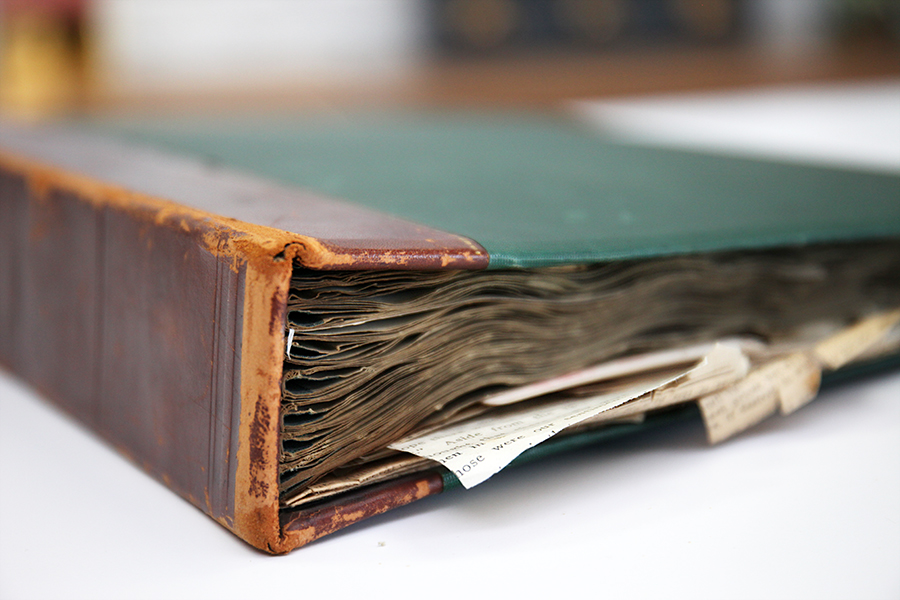
Insects, especially bed bugs, can be a big problem in books, but getting rid of them is a surprisingly easy (if tedious) process, by using a common household freezer. It’s recommended that you ensure that books are as dry as possible before attempting insect eradication using this method of freezing.
Before books can be frozen to eradicate insects, they need to be wrapped in sealed plastic. Plastic bags with zips are the easiest and best way to do this, with each book in its own bag. After the books are sealed in the bags, they should be placed in a freezer (preferably one without ice build-up) for at least 72 hours. After 72 hours, unplug the freezer and leave it closed to allow the books to slowly thaw out, remaining inside. This freeze-thaw process may need to be repeated two or three times to ensure the eradication of large infestations.
Killing Mold & Mildew Growth on Paper
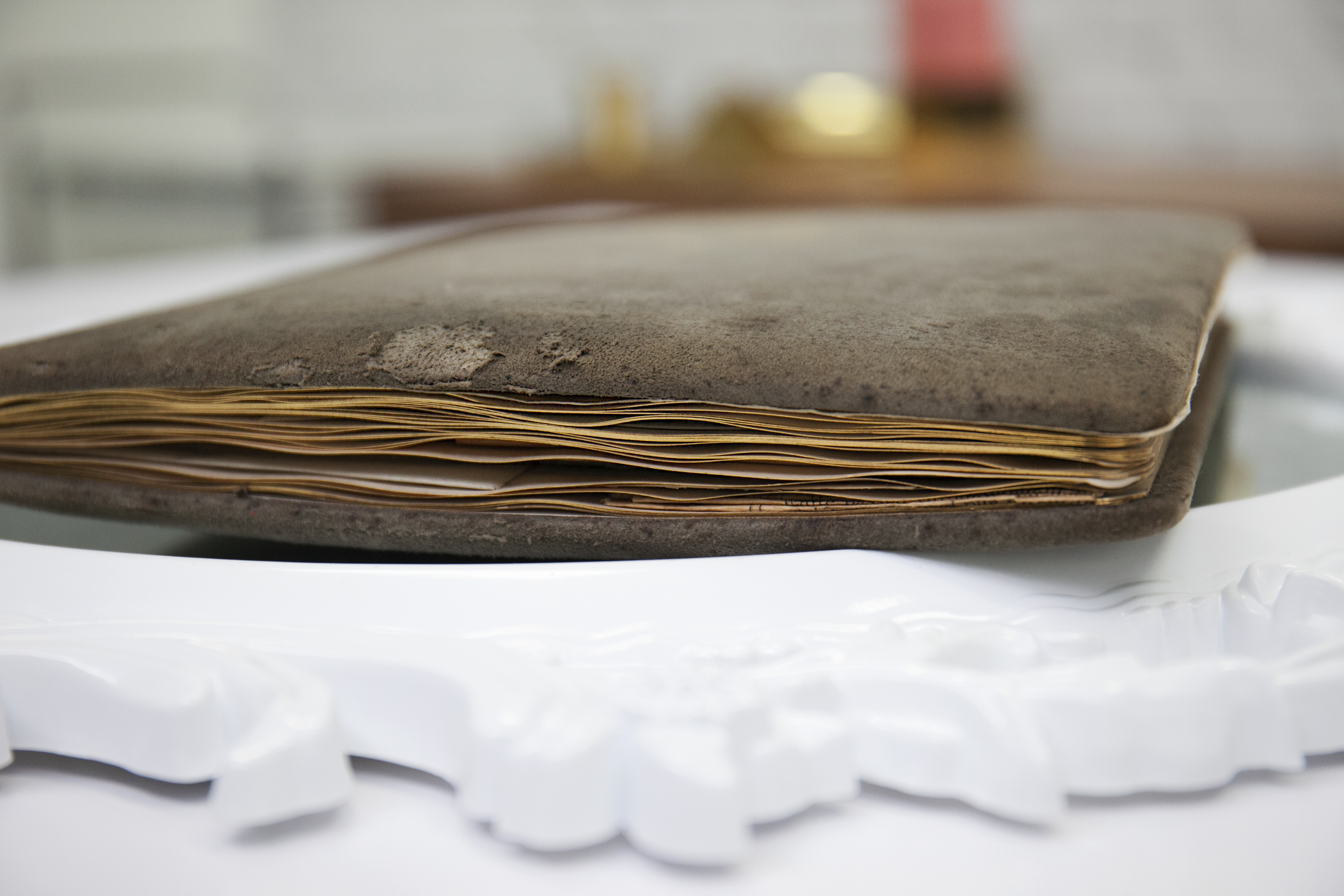
If a paper item has been exposed to moisture, from placement in the home to climates with high humidity, it is at risk of developing mold and mildew that can cause progressive damage. It is critical to stop that process in its tracks as quickly as possible to prevent further damage.
The first step to eradicating mold and mildew is to remove the condition that created them: water. Documents can be laid out to dry with good ventilation, but books with wet pages will need to have something absorbent, such as paper towels, placed between the pages (replaced frequently with dry ones as they soak up water). Using fans or laying items in the sun to dry can speed up the process, but use those techniques sparingly as they may do damage of their own to paper materials.
After the book or document is dried thoroughly, use a cotton ball, soft cloth, or very soft brush to gently wipe away the dried-up mold or mildew off the paper’s surface and onto scratch paper or other surface that can be cleaned or disposed of. It is advisable to wear breathing protection while completing this step, in case some mold spores become airborne.
If there is still evidence of mold or mildew on the paper, place a sheet of wax paper behind the page. Then use hydrogen peroxide or denatured alcohol applied with a soft cloth to gently clean the paper. Test the treatment first in an inconspicuous area, and be sure your paper doesn’t have any ink or pencil markings that will be removed by the solvent!
Surface Cleaning
Once a book or document is free from threats like insects or mold, a general surface cleaning to remove dirt may be in order. This sort of cleaning is not intended to remove stains, but rather to clean build-up from the general surface area.
The first step in surface cleaning is to brush the paper surface with a soft brush to remove dust and other surface dirt. If additional cleaning of the surface is desired, either cut open or squeeze some of the contents out of a drafting dry cleaning pad. Rub the cleaning powder from inside the pad in a circular pattern across the surface with a soft brush. Then, brush it off your paper item, being careful to remove the powder as thoroughly as possible.
Paper Repair
Physically repairing a torn or otherwise damaged paper document is no small task, and requires specialized materials not easily acquired by non-professionals, so the task may be best left to professionals. But, for those willing to take on the task, it is possible with required patience and some skill.
To patch a tear or hole in a paper document, archivists use a very thin Japanese paper called kozo. (Many scrapbookers are unknowingly familiar with kozo from its use in making authentic Japanese washi tape.) The kozo paper needs to be attached with adhesive that isn’t damaging and is also reversible. To achieve this, it is recommended that conservators make their own paste from wheat starch and water.
Digitization
In the modern era, restoration of a paper item can also include duplicating it and fixing it virtually instead of physically. Often a paper item’s value is less in the physical object itself than in the image or information that it contains. And sometimes we have items, like newspaper clippings on paper album pages, that have been glued down permanently. In these cases, digital preservation is an excellent alternative.
Photos can easily be scanned – and even enhanced – with just the touch of a few buttons using many home all-in-one printers. Some detail can be returned to faded photos, a rip or water spot can be removed, or color shift can be corrected in an old color print.
As a preservation technique for paper documents, digitization has one important benefit not available with any other technique: duplication. As great as it is to clean and properly store that photo of grandpa as a little boy, when you are done there is still only one copy, leaving it susceptible to loss. But digitizing the image means copies can be shared with all your siblings, and stored in multiple locations. A generation from now when you want to show it to your own grandchildren, odds are more likely that digital image will be around somewhere than that the paper copy will.
Conclusion
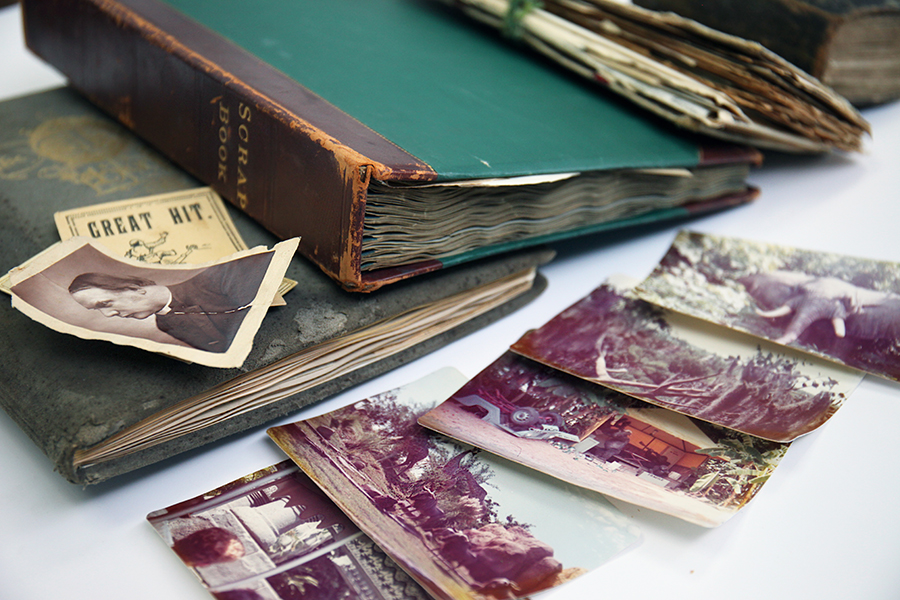
A large part of our personal and family history is preserved in one way or another on paper. The best restoration of course is preservation and conservation, to protect items from the start. But it’s nice to know that if our documents do get harmed, that paper restoration techniques exist to aid us in making them beautiful and useful again.

